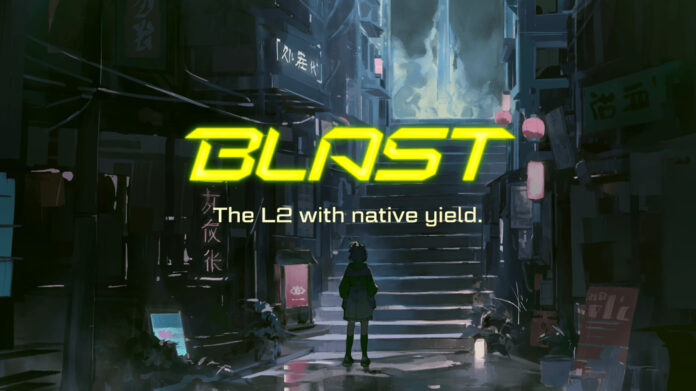
Ethereum's newest Layer2, Blast, has surpassed 2 billion TVL as it approaches its mainnet launch on February 29.
Blast is a project built on Ethereum's Layer2, aimed at providing faster, cheaper, and more secure transactions on the network. project, led by developer Tieshun Roquerre (aka Pacman, the creator of the Blur protocol), promises to boost market efficiency and generate “native yield” for users who deposit liquidity using ethers or stablecoins within the protocol.
Blast allows users to deposit liquidity and receive BLAST points by participating in an airdrop that is already active. In addition, users can send ETH to Layer2 and receive ETHB, a token that reflects the value and performance of ETH deposited in a Layer1 staking protocol, such as Lido.
The team behind the project is made up of experienced individuals from prestigious institutions and successful projects in the technology and blockchain industry. Of particular note is the presence of Pacman, the creator of the renowned NFT marketplace protocol, Blur. In addition, the team members have experience in Ethereum projects and other chains such as Solana, coming from institutions such as MIT, Yale, among others.
On the other hand, the project's financial backing is notable, as it has managed to raise $20 million from prominent investors, including Paradigm, Standard Crypto, and several influential figures in the crypto space.
Blast TVL Increase
In the past few days, the total value staked (TVL) in the Blast contract has experienced a significant increase. Currently, the TVL in the contract is $2,1 billion, which represents a remarkable growth of 26,5% over the past seven days. This data demonstrates the significant growth of the protocol and its outstanding unique business model, which has captured the interest of more than 157.000 community members.
Blast’s rapid rise in the crypto industry has marked a significant milestone, with a TVL that surpasses other projects in terms of total value deposited. Despite controversies and challenges, the project has managed to transcend expectations, creating a huge impact in the crypto community.
In this way, Blast has managed to transform the concept of performance in the Ethereum L2 ecosystem and has demonstrated impressive growth in its TVL in recent days, consolidating itself as an innovative and highly relevant platform in the cryptocurrency market.
Objective of the service
Blast's main goal is to revolutionize the staking mechanism with ether, Ethereum's native cryptocurrency. It provides yields through staking platforms such as Lido and MakerDAO's T-Bill protocol, returning said yield directly to users who deposit liquidity.
Additionally, Blast is looking to bring real-world assets (RWA) to the ETH staking ecosystem, offering its customers the ability to deposit stablecoins and receive USDB, a token backed by the MakerDAO protocol and pegged to the yield of 10-year US Treasury bonds.
Key Features and Innovations
The main attraction of BLAST and its Layer2 proposal lies mainly in some key functions and innovations such as:
- Native yields. Blast distinguishes itself by offering native yields on ETH and stablecoins, a rare feature among layer 2 solutions. This is achieved through an automatic rebasing mechanism and integration with protocols involving real-world assets, which aim to improve the value and efficiency of assets within its ecosystem.
- Auto-rebase for ETH. By leveraging the Ethereum network’s post-Shanghai upgrade capabilities, Blast enables automatic scaling of ETH balances by directly transferring L1 staking returns to users on L2. This feature aims to ensure that ETH holdings on Blast continuously grow, mirroring L1 staking returns.
- T-Bill performance for stablecoins. By offering an auto-rebasing stablecoin, USDB, Blast provides stablecoin holders with a unique yield earned on real-world assets via MakerDAO’s T-Bill protocol.
This makes Blast a promising DeFi and Layer2 platform that we will surely hear more about in the near future.
Continue reading: MicroStrategy President Michael Saylor Assured There Is No Reason To Sell Bitcoin



